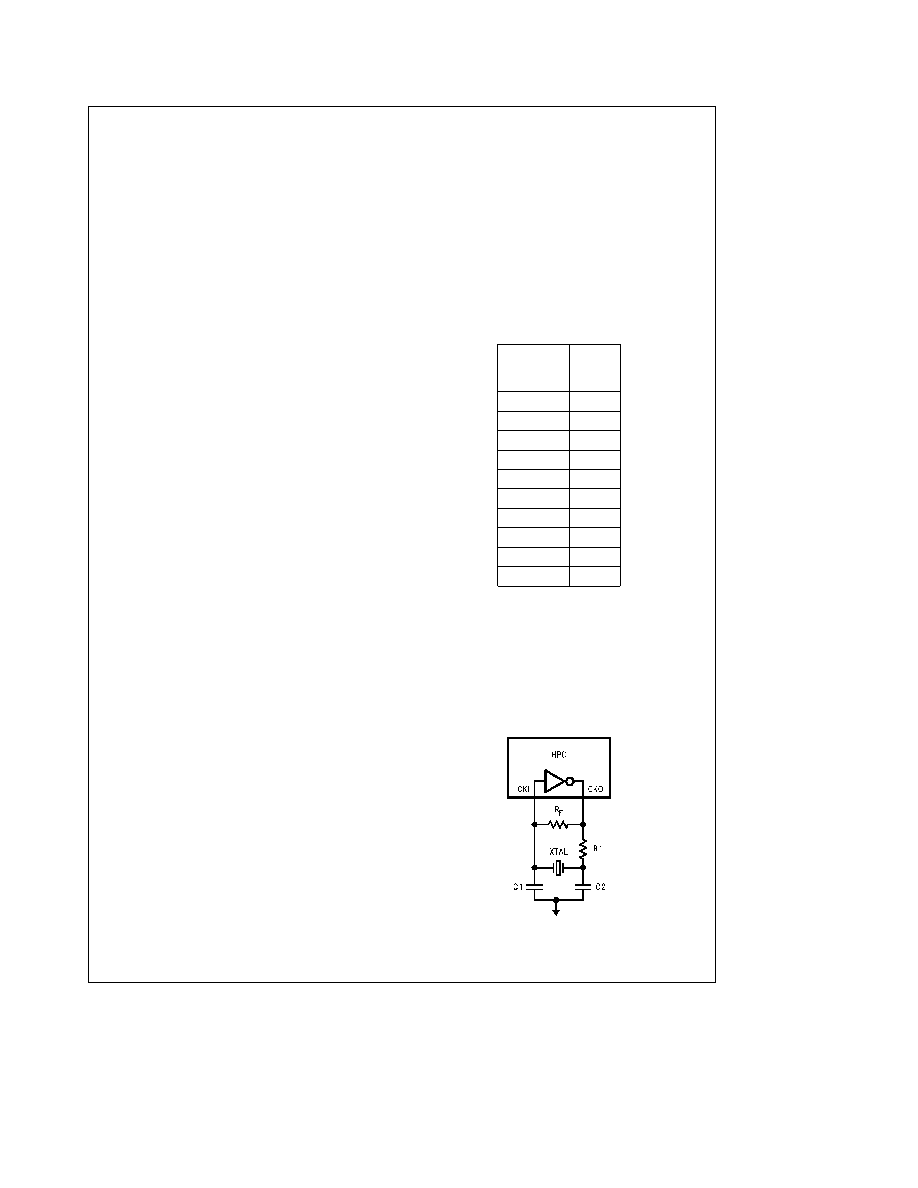- 您現(xiàn)在的位置:買賣IC網(wǎng) > PDF目錄296194 > HPC36400EV2 (National Semiconductor Corporation) High-Performance Communications MicroController PDF資料下載
參數(shù)資料
| 型號: | HPC36400EV2 |
| 廠商: | National Semiconductor Corporation |
| 英文描述: | High-Performance Communications MicroController |
| 中文描述: | 高性能通信微控制器 |
| 文件頁數(shù): | 15/30頁 |
| 文件大?。?/td> | 362K |
| 代理商: | HPC36400EV2 |
第1頁第2頁第3頁第4頁第5頁第6頁第7頁第8頁第9頁第10頁第11頁第12頁第13頁第14頁當(dāng)前第15頁第16頁第17頁第18頁第19頁第20頁第21頁第22頁第23頁第24頁第25頁第26頁第27頁第28頁第29頁第30頁

Design Considerations
Designs using the HPC family of 16-bit high speed CMOS
microcontrollers need to follow some general guidelines on
usage and board layout
Floating inputs are a frequently overlooked problem CMOS
inputs have extremely high impedance and if left open can
float to any voltage possibly causing internal devices to go
into active mode and draw DC current You should thus tie
unused inputs to VCC or ground either through a resistor or
directly Unlike the inputs unused outputs should be left
floating to allow the output to switch without drawing any DC
current
To reduce voltage transients keep the supply line’s parasit-
using wide traces ground planes and by decoupling the
supply with bypass capacitors In order to prevent additional
voltage spiking this local bypass capacitor must exhibit low
inductive reactance You should therefore use high frequen-
cy ceramic capacitors and place them very near the IC to
minimize wiring inductance
Keep VCC bus routing short When using double sided or
multilayer circuit boards use ground plane techniques
Keep ground lines short and on PC boards make them
as wide as possible even if trace width varies Use sepa-
rate ground traces to supply high current devices such as
relay and transmission line drivers
In systems mixing linear and logic functions and where
supply noise is critical to the analog components’ per-
formance provide separate supply buses or even sepa-
rate supplies
When using local regulators bypass their inputs with a
tantalum capacitor of at least 1 mF and bypass their out-
puts with a 10 mFto50 mF tantalum or aluminum electro-
lytic capacitor
If the system uses a centralized regulated power supply
usea10 mFto20 mF tantalum electrolytic capacitor or a
50 mFto100 mF aluminum electrolytic capacitor to de-
couple the VCC bus connected to the circuit board
Provide localized decoupling For random logic a rule
of
thumb
dictates
approximately
10
nF
(spaced
within 12 cm) per every two to five packages and 100 nF
for every 10 packages You can group these capacitanc-
es but it’s more effective to distribute them among the
ICs If the design has a fair amount of synchronous logic
with outputs that tend to switch simultaneously addition-
al decoupling might be advisable Octal flip-flop and buff-
ers in bus-oriented circuits might also require more de-
coupling Note that wire-wrapped circuits can require
more decoupling than ground plane or multilayer PC
boards
A recommended crystal oscillator circuit to be used with the
HPC is shown in
Figure 20 See table for recommended
component values The recommended values given in the
table below have yielded consistent results and are made to
match a crystal with a 20 pF load capacitance with some
small allowance for layout capacitance
A recommended layout for the oscillator network should be
as close to the processor as physically possible entirely
within 1
distance This is to reduce lead inductance from
long PC traces as well as interference from other compo-
nents and reduce trace capacitance The layout should
contain a large ground plane either on the top or bottom
surface of the board to provide signal shielding and a con-
venient location to ground both the HPC and the case of
the crystal
It is very critical to have an extremely clean power supply for
the HPC crystal oscillator Ideally one would like a VCC and
ground plane that provide low inductance power lines to the
chip The power planes in the PC board should be decou-
pled with three decoupling capacitors as close to the chip
as possible A 10 mF a 01 mF and a 0001 mF dipped mica
or ceramic cap mounted as close to the HPC as is physically
possible on the board using the shortest leads or surface
mount components This should provide a stable power
supply and noiseless ground plane which will vastly im-
prove the performance of the crystal oscillator network
HPC Oscillator Table
XTAL
Frequency
R1 (X)
(MHz)
s
2
1500
4
1200
6
910
8
750
10
600
12
470
14
390
16
300
18
220
20
180
RF e 33 MX
C1 e 27 pF
C2 e 33 pF
XTAL Specifications The crystal used was an M-TRON Industries MP-1 Se-
ries XTAL ‘‘AT’’ cut parallel resonant
CL e 18 pF
Series Resistance is
40X
10 MHz
600X
2 MHz
TLDD10422 – 29
FIGURE 20 Recommended Crystal Circuit
22
相關(guān)PDF資料 |
PDF描述 |
|---|---|
| HPC46003 | High-Performance microControllers |
| HPC46083 | High-Performance microControllers |
| HPC46100VF40 | HPC46100 High-Performance microController with DSP Capability |
| HPC46100 | HPC46100 High-Performance microController with DSP Capability |
| HPC46400EV2 | High-Performance Communications MicroController |
相關(guān)代理商/技術(shù)參數(shù) |
參數(shù)描述 |
|---|---|
| HPC36400EV20 | 制造商:NSC 制造商全稱:National Semiconductor 功能描述:High-Performance Communications MicroController |
| HPC36400EVHG2 | 制造商:NSC 制造商全稱:National Semiconductor 功能描述:High-Performance Communications MicroController |
| HPC36400EVHG20 | 制造商:NSC 制造商全稱:National Semiconductor 功能描述:High-Performance Communications MicroController |
| HPC36400L20 | 制造商:未知廠家 制造商全稱:未知廠家 功能描述:16-Bit Microcontroller |
| HPC36400T20 | 制造商:未知廠家 制造商全稱:未知廠家 功能描述:16-Bit Microcontroller |
發(fā)布緊急采購,3分鐘左右您將得到回復(fù)。